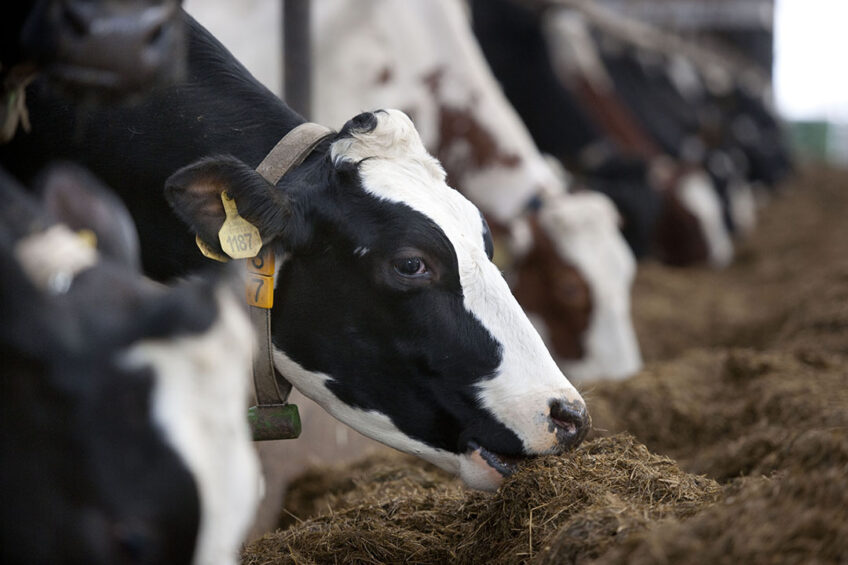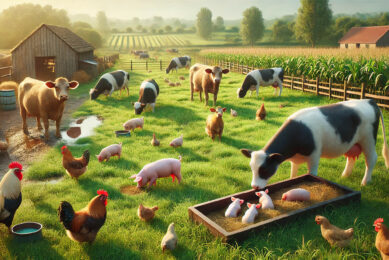Global approach to rumen microbiome research necessary

In recent years, much emphasis has been put on the composition and function of the rumen microbiome and its association with environmental and economically important factors, such as methane emissions. However, a recently published review, suggests that a new and more global approach to rumen microbiome research may hold the answers necessary for further improvements.
Ruminants play an important role in agricultural production, and the rumen and microbiome within it play a crucial role in helping dairy and beef cattle digest and absorb nutrients from the feed they ingest. In many parts of the world, ruminants graze on land that is unsuitable for crop production. They convert recalcitrant feed, including waste by-products such as dry distillers grain, and low-quality forage, into a valuable source of protein for human consumption.

Rumen microbial composition
For decades now, researchers have been examining the role of the rumen microbiome. Studies reveal that several factors play a role in determining rumen microbial composition and function, including diet, genetics, age, gender and geography. More study is needed, however.
“We want to better understand how food is digested and how the animals can harvest energy from that food using these microbes as the main means of acquiring nutrients,” explains André Luis Neves, one of the paper’s authors.
“If you have an imbalance between this complex community, of course, you have negative impacts on health,” says Neves, who is a Research Analyst at Embrapa Dairy Cattle, based in Aracaju, Brazil.
“It is important to understand these interactions also because of the health of the host,” he added. “The microbes are also related to the immune system.”
Much work has also been done to see if microbial populations in the rumen can be manipulated through diet or additives like 3-NOP. What is known is that there are many factors that impact the rate and intensity of rumen methanogenesis. Dietary composition, for one, can impact the volume of measurable ruminal CH4 produced. High-forage diets lead to more CH4 production than concentrate-rich diets, for example.
“Although it may seem profitable to simply move away from feeding forages to cattle, reduced rumen pH under high-starch diets may contribute to imbalance of the microbial community and fermentation and lead to sub-acute ruminal acidosis,” the paper explained.
Genetics could play a role
Recent studies suggest that heritability may also play a role in certain groups of rumen bacteria in beef and dairy cattle. If strongly defined heritable relationships can be found between the host and the microbiome, researchers believe it might be possible to target the host via genetic selection to optimise the microbiome, rather than vice versa, as is the current practice.
“It is unknown if host genetics influence colonisation patterns in the rumen, but if this could, through multi-omic frameworks, be confirmed, it might be possible to select for a more favourable colonisation pattern that is amenable to persistent manipulation via dietary or management interventions,” says the paper.
“You want to favour the growth of a microbial community that is more beneficial to improve animal feed efficiency, reduce methane emissions and help livestock production be more environmentally friendly,” adds Neves.

A new approach needed
In order to better understand the role of the rumen microbiome and the factors that determine its composition and function, the authors suggest that a more global approach to statistical analysis may be necessary.
“The strategy should be similar because the problem is global,” says Neves, pointing to the environmental impact of methane emissions as an example.
“If you had a more global approach you could tackle the problem,” he adds.
While the advantages of high throughput sequencing technology in terms of gathering data from diverse samples are clear, analysis of that data is challenging, says Neves.
High throughput sequencing efforts are subject to a range of biases, including method of sample collection, method and duration of sample preservation prior to analysis, choice of nucleic acid extraction protocol and sequencing technology, Neves wrote in the paper. On top of that, bioinformatics tools used for analysing high-throughput sequencing data have not been widely compared for their consistency.
The danger of running the data incorrectly is getting false positives leading researchers to draw inaccurate conclusions. For this reason, Neves believes it will be important to standardise analysis going forward. Doing so will help to further validate scientific research conducted in different parts of the world.
Beyond the rumen
While much research has been conducted on the role of the rumen in terms of feed efficiency and its impact on the environment, very little is known about the lower-gut microbiome. But according to the recently published review by Dr Eóin O’Hara and colleagues from the University of Alberta in Canada, increasing evidence suggests that the lower gastrointestinal tract (GIT) and the microbiota within it also play an important role in cattle production and health. Also known as the post-gastric intestinal tract, the lower gut consists of the small intestine and the hindgut regions. What researchers know for certain is that the lower-GI tract plays an important role in calf development. The rumen of a newborn and young calf is not well developed; most of its first nutrients come from colostrum.
“The more you understand the lower gut and how the microbes in the lower gut interact with the host – in this case, the calves – the more important it is to understand how immunoglobulins are used in that portion of the gut in order to carry the antibodies that the calf needs to be resilient to certain diseases,” Neves explains.
“This is one of the key points in terms of studying the lower gut in calves,” he adds. Very few studies have been conducted on the lower gut of adult ruminants. The paper’s authors suggest, therefore, that future studies include analysis of the lower gut microbiome as well.
Finding the optimum gut microbiome
Finally, the paper calls for a shift in thinking, calling on microbiome researchers to move their focus from associative to causal, mechanism-based studies. The paper suggests that researchers move away from the current ‘piecemeal approach’ in exchange for more microbiome-wide association studies. Doing so will help to conclusively identify microbial pathways that actively contribute to host phenotype. This, in turn, will allow them to find the optimum gut microbiome under any given circumstance.
Join 13,000+ subscribers
Subscribe to our newsletter to stay updated about all the need-to-know content in the dairy sector, two times a week.






